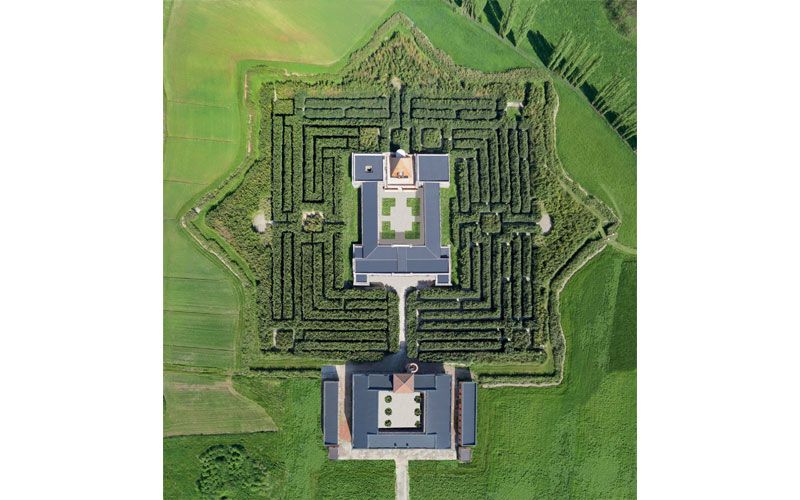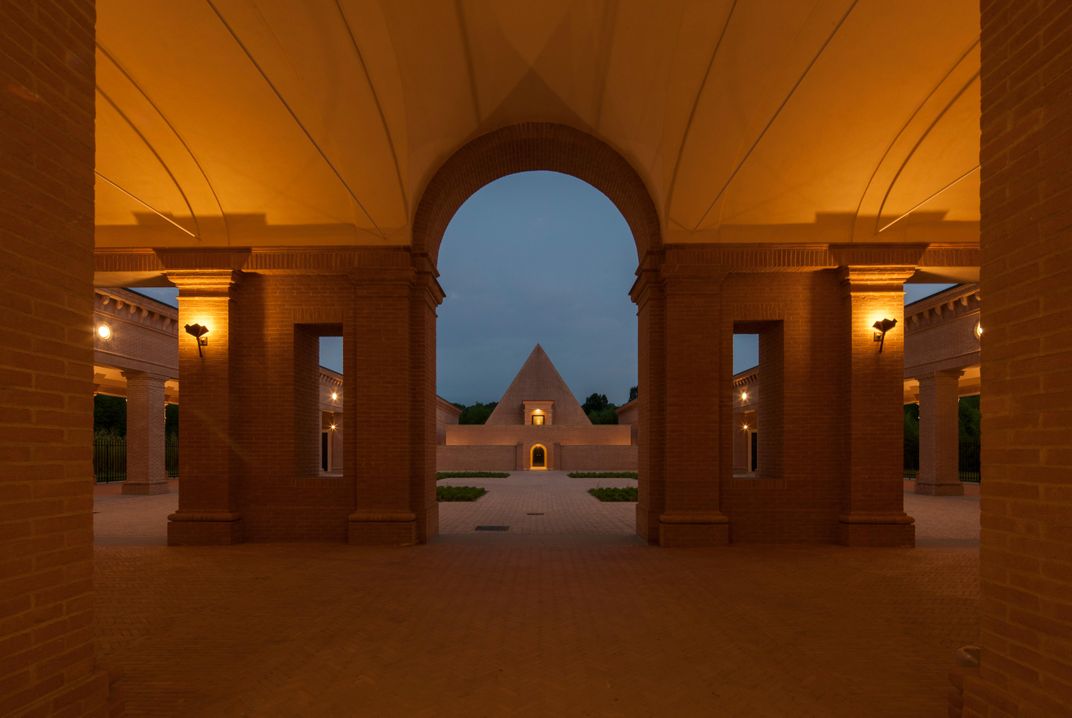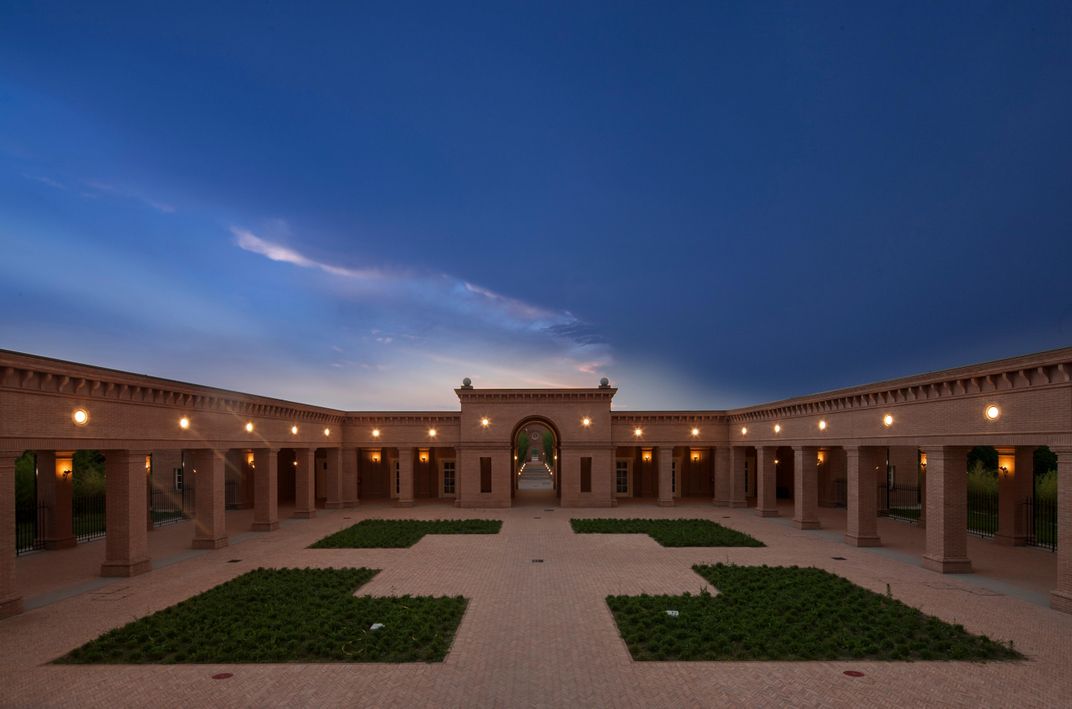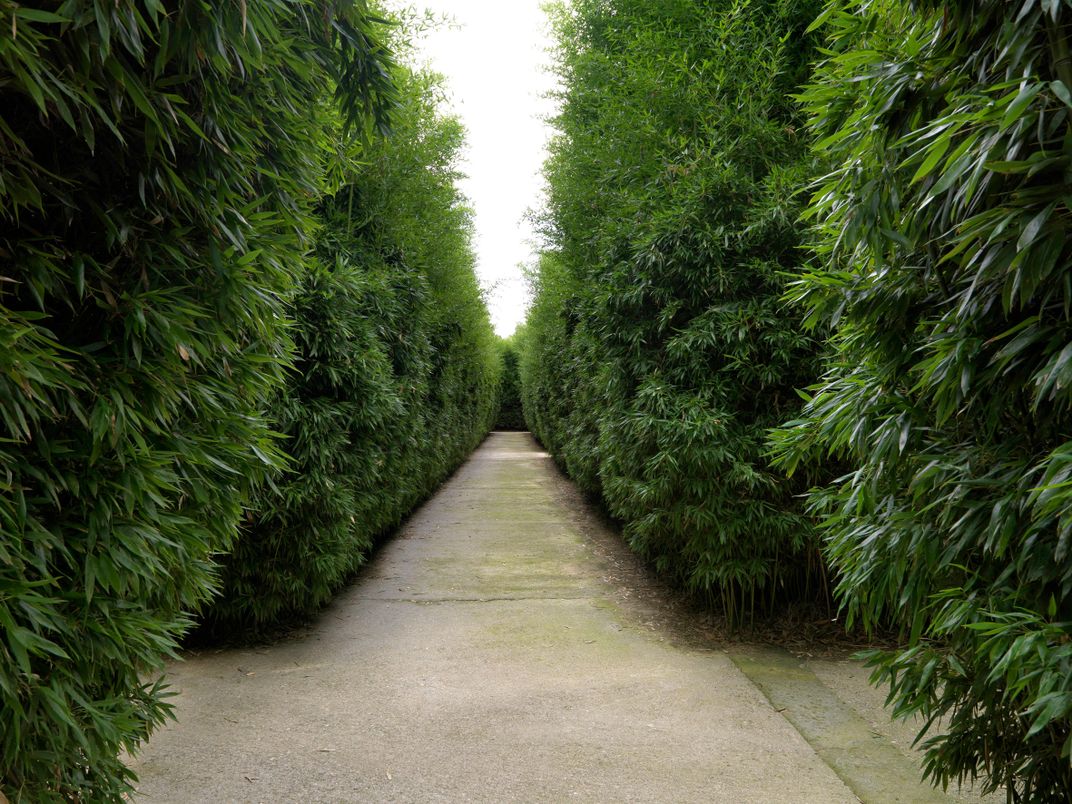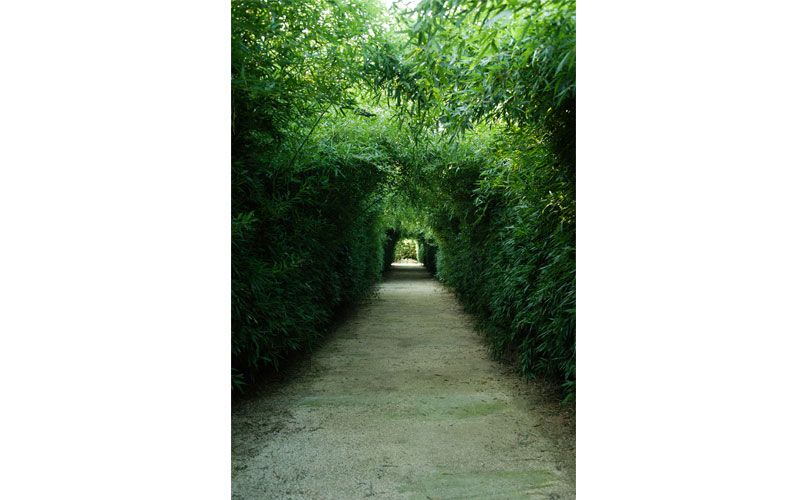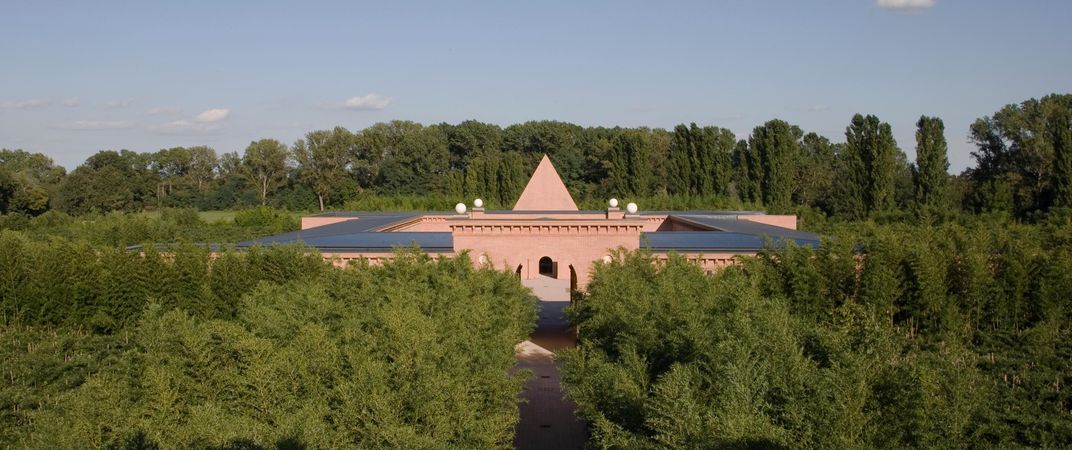Get Lost in the World’s Largest Maze
Ponder existence while wandering through the bamboo stalks of Italy’s Masone Labyrinth
As if anyone needed another reason to visit Italy, the country now has the world’s largest maze. The northern Italian city of Parma is the home of Parmesan cheese and, as of late May this year, also the Masone Labyrinth (Labyrinth of Mason), a 20-acre, star-shaped bamboo labyrinth that winds its way around a golden pyramid.
This extraordinary attraction is the brainchild of Italian art collector, bibliophile and art magazine publisher Franco Maria Ricci. In 1998, he sold his publishing house and invested the money into making this labyrinth, hoping to create a destination that would inspire wonder and curiosity, among other emotions. “[W]andering in the maze is a very personal experience. … some see it almost as an 'extreme' adventure and refuse to consult the map and others chose to stroll slowly and find it relaxing and inspiring,” Ricci wrote through a translator to Smithsonian.com.
The inspiration for creating the labyrinth came from Ricci’s long-time friendship and collaboration with the late Argentinean writer and poet Jorge Luis Borges. Ricci admired Borges’ work, and the writer frequently contributed to his magazines. One evening in 1977, Borges was staying at Ricci’s country home when the conversation turned to how labyrinths are a metaphor for the human condition—a favorite theme in Borges’ writings. Then, Ricci mentioned to Borges that he wanted to build the world’s largest maze.
"It was one of those things you say without really thinking, nothing to lose and nothing to gain," says Ricci. Borges insisted it couldn’t be done: “[He] told me that that would be impossible since the largest already existed and it was unbeatable: the desert!” Nonetheless, after a long career and the sale of his publishing company, Ricci took the challenge. Nearly four decades later, the Masone Labyrinth has eclipsed Dole’s Pineapple Garden Maze in Hawaii as the largest in the world.
The maze was constructed using 200,000 bamboo plants of assorted varieties and sizes. “[Bamboo is] a very strong plant with an elegant bearing,” explained Ricci, and it's also one of the fastest-growing plants on Earth, he notes. Since Ricci started this project late in life, he says it was the logical choice if he wanted to see his maze fully grown in his lifetime.
The winding paths of bamboo surround a 21,500-square-foot piazza complete with a pyramid that houses a chapel. On display in galleries adjacent to the piazza are hundreds of items from Ricci’s massive art and sculpture collection. A nearby library that's also part of the complex contains volumes of typography books (including rare editions from Giambattista Bodoni, the man who developed serif typeface) as well as the entire catalog of Ricci's publishing house. The complex also holds considerable space for events. While gala dinners and meetings have already occurred in the piazza, Ricci seems to be most looking forward to weddings. He calls the gold-plated chapel an “ideal site” for a wedding, complete with “two beautiful suites to spend the wedding night.”
Ultimately, however, Ricci says he wanted to build something that allowed people to get lost. Much like Borges, he believes that a labyrinth symbolizes the human path through life, and the difficulties "that every one has to overcome during his long or short-lasting life." And while we all want to find ourselves, Ricci says that getting lost may be even more memorable: "The emotion of getting lost is unforgettable for everyone."
H/T Curbed
